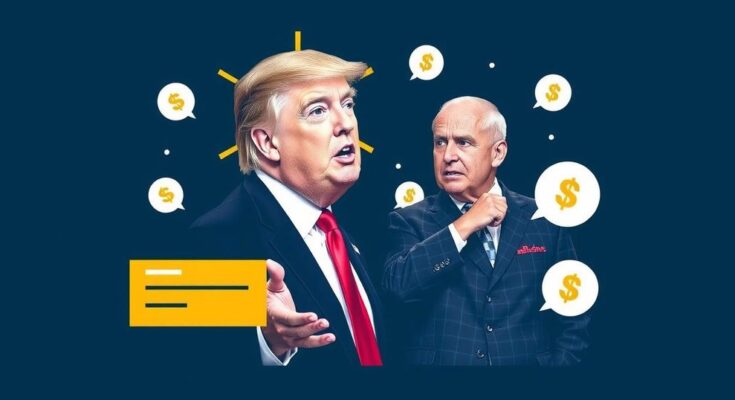Donald Trump’s upcoming second term is expected to focus on tax cuts, deregulation, and stringent immigration policies, yet the extent of their implementation remains unclear. Economists express concerns that proposed tariffs and mass deportations could harm economic sectors and exacerbate national debt. The dialogue surrounding government efficiency and possible spending cuts signifies an ongoing struggle for fiscal balance while navigating complex political terrains.
As Donald Trump gears up for his anticipated second term as president, the economic landscape appears poised for notable shifts. His bold plans include extending the previous tax cuts, pushing for expansive deregulation, reinstating rigorous tariffs on imports, and initiating mass deportations of undocumented immigrants. However, the depth to which these policies will be enacted remains uncertain. Economists are scratching their heads, weighing the likelihood of Trump’s promises against economic realities and potential fallout. The looming threat of substantial tariffs, particularly those targeting China with rates as high as 60%, has raised alarms among experts who caution that such moves could destabilize economic sectors reliant on affordable imports. Coupled with promises to boost fossil fuel extraction despite current production levels at an all-time high, these initiatives could strain both the environment and the economy. On immigration, there’s a tug-of-war between aggressive deportation plans and a more selective approach. Tax policy stands as a focal point, with Trump likely to collaborate with a Republican-controlled Congress to make existing cuts permanent while exploring additional reductions that could lessen government revenue. While some believe these tax changes may provide slight economic stimulation, experts like Steven B. Kamin warn that they threaten to escalate national debt levels significantly, potentially hampering future government investments and economic growth. Moreover, any drastic cuts to federal spending, like those proposed by Elon Musk, would require tough political negotiations, potentially facing strong opposition even from within the Republican Party. The proposed creation of a Department of Government Efficiency exemplifies the intensity of Trump’s approach to fiscal policy. Suggested savings up to $2 trillion per year could mean significant cuts to social safety nets, including vital services such as Social Security. Finally, Trump’s approach to immigration and trade could devastate key industries where undocumented workers play a crucial role, especially in agriculture and construction. As Marcus Noland from the Peterson Institute warns, a dramatic reduction in this labor force could lead to increased prices and reduced economic output. Furthermore, his aggressive tariff strategies could generate unexpected consequences for U.S. manufacturing, potentially reversing any intended benefits by making production costs unmanageable. Navigating through these tumultuous economic waters, Trump’s presidency seems set to confront sharp contradictions—progressive promises clashing with the realities of fiscal mechanics and labor dynamics. Each bold policy proposal invites scrutiny not just for its ambition but for its potential to reshape the fiscal fabric of the nation.
The dynamics of economic policy under Donald Trump for his second presidential term present a complex tapestry interwoven with ambitions of tax cuts, deregulation, protectionist trade practices, and handling immigration—specifically the fate of undocumented immigrants. These core policies raise fundamental questions for economists about the feasibility and implications, as many echo Trump’s past proclamations while being cautious about interpretative extremes concerning his plans. Historically, Trump’s economic approach has shifted since his last campaign, reflecting the pressures and complexities inherent to actual governance versus populist rhetoric. The potential changes may reverberate across sectors, influencing everything from individual tax burdens to industry competitiveness, thereby affecting millions of Americans in their daily lives and their economic security. Furthermore, the exploration of efficiency in government spending, highlighted by suggestions for sweeping reductions and new governmental structures, signifies a quest not only for fiscal balance but also for political feasibility within a potentially divided Congress.
In conclusion, Donald Trump’s impending second term promises significant economic shifts, but the viability of his ambitious proposals raises both eyebrows and concerns. While the push for extended tax cuts, aggressive trade policies, and immigration overhauls aims to invigorate the economy, they stir potential risks such as rising national debt, heightened production costs, and adverse impacts on labor-intensive industries. As economists navigate the uncertainty surrounding these initiatives, the delicate balance between ambition and economic stability remains a crucial narrative in the unfolding story of America’s fiscal future.
Original Source: www.voanews.com



